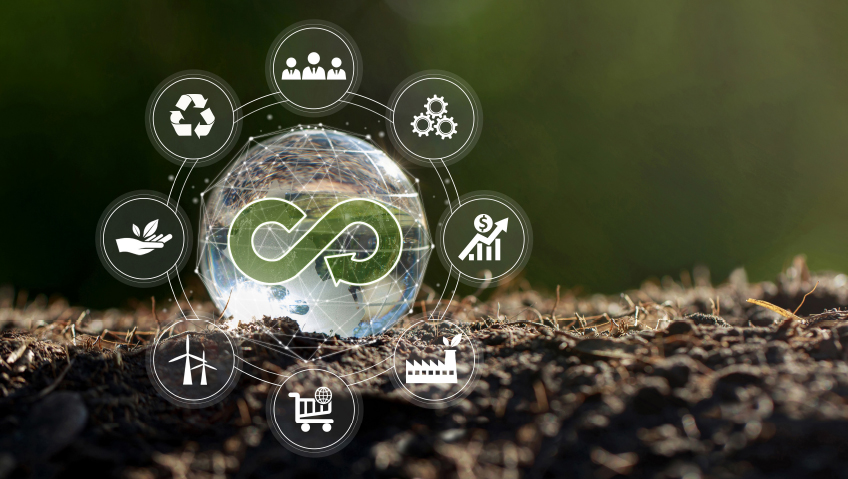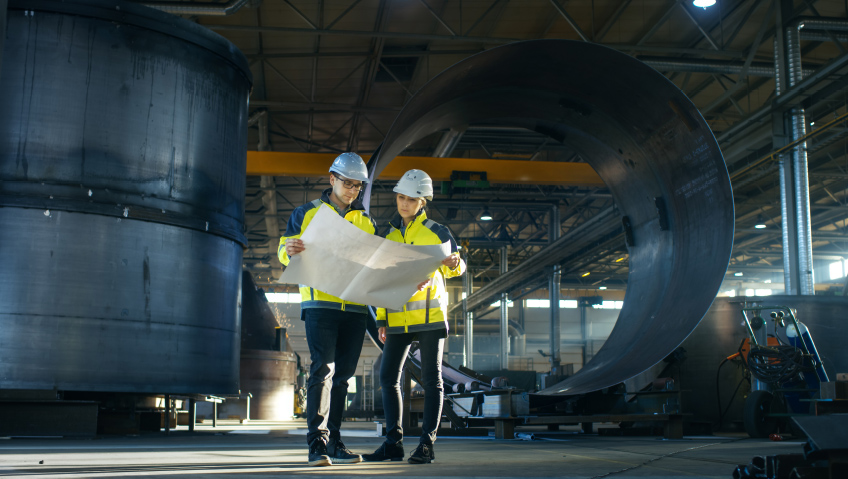As countless global initiatives attempt to combat the environmental impacts of waste and introduce more eco-friendly ways of life, sustainable manufacturing is an emerging practice that is quickly becoming recognized by global organizations as a new method of production.
The United Nations defines this as development that meets the needs of the world at present without compromising the ability for future generations to do the same. There has also never been a greater need for greener practices than right now. In a press release by the American Chemical Society, it is purported that the United States industrial sector accounts for about one third of all energy used in that country with approximately 32 quadrillion Btu of energy consumed and around 1680 million metric tons of carbon dioxide produced as a result.
There is a much greater importance placed today on making processes and products more ecologically friendly or, at very least, more in line with the effort and materials used to create, sustain, or ultimately dispose of them. A company or brand that makes commitments to sustainability can also see benefits in both its results and public image, as greater amounts of customers demand a degree of environmental responsibility from such brands. The incentive is there for the move to sustainable manufacturing but there is a degree of uncertainty on what exactly it entails.
A piece published on the website for Essentra Components puts forward more benefits of sustainable manufacturing practices: “Packaging is kept to a minimum, is easily disassembled and uses standard materials compatible with established recycling processes. Shipping finished goods in smaller, more form-fitting packaging also eliminates the need for filling materials such as polystyrene blocks or packing peanuts, both of which are increasingly being phased out in favour of more biodegradable alternatives.”
In an article for Efficient Manufacturing, Nageswara Posinasetti details that a tenet of sustainable manufacturing is to adhere to four environmentally friendly activities across a supply chain, which are: the reduction of energy use, water usage, emissions, and waste generation. The cost of machining, environmental impact, and concern around the health of operators is driving sustainability researchers to find alternatives to harmful or hazardous processes.
One of these alternatives is called Minimum Quantity Lubrication (MQL), used in place of machining processes which utilize oil. MQL uses much smaller quantities of fluids to feed to the machine in a bid to save energy. These processes are also beginning to experiment with the use of biodegradable vegetable oils, which are also far more renewable. These fluids lack harmful additives which can help to cut down on disposal costs along with several other fringe production benefits.
Sustainable methods of production and manufacturing are one thing, but it can only go so far without the need for materials that are just as environmentally friendly. As far as sustainable materials, there are three different types available in today’s marketplace: Natural, that which is grown or naturally occurring; renewable, that which can be naturally replenished rather than consumed to a definite end; and harmless/non-toxic. Among these categories, sustainable materials that can be used across myriad industries include bamboo, adobe, bioplastics, stainless steel, aluminum, and straw. For now, let’s focus on three that are cited as especially environmentally friendly, renewable, and varied in use.
Bioplastic materials stand out as one of the more exciting prospects for sustainable materials, as the properties achievable are often similar to petro-chemical plastics. An article for Fast Radius details that bioplastic material can be a much more environmentally viable alternative to common plastics. These bioplastics can be made from all kinds of resources including corn, seaweed, sugarcane, shrimp shells, and more. These materials are, in turn, biodegradable and can encourage lower operating costs and energy expenses through their use; in cases where petroleum-based plastics are still in need, there are sustainable methods associated with bioplastics that can be used to reduce the carbon footprint of plastic production overall.
An example of a bioplastic would be polylactic acid, a material derived from plants that can be made into shopping bags, 3D printing material, and more. According to an information packet supplied by European Bioplastics, a plastic material is defined specifically as bioplastic if it is bio-based (made at least partly from biological matter), biodegradable (able to break down naturally in a reasonable timeframe), or a mixture of both.
However, bioplastics as a material is not a magic solution to environmental woes. Many experts in the field believe that simply swapping plastics with bioplastics will not be enough to reverse or halt emissions or energy consumption on its own; instead, focus should be placed on tackling consumption and the global reliance on plastics should be deemphasized for materials like bioplastic to have a chance at reducing fossil fuel emissions and various other purported effects of their usage.
Of the previously cited sustainable materials used across manufacturing, aluminum has one of the more striking cases for being a renewable and environmentally friendly resource. As a lightweight and durable material, aluminum is purported to be infinitely recyclable, with aluminum production being less than half as carbon intensive as it was 30 years ago, thanks to the advent of renewable hydropower in regions that produce it (as put forth by The Aluminum Association ).
From vehicles to buildings to even consumables, aluminum can be recycled continuously without degrading its inherent value. According to data from The Aluminum Association, nearly 75 percent of all aluminum ever produced is still in use today. The aluminum industry is working toward greater sustainability year after year, so as not to rest on its laurels with what the material has accomplished so far.
In the search for viable and renewable materials for manufacturing and other purposes, sometimes the old ways still have much to teach us. A material still called on for its carbon neutrality is straw, traditionally used in the making of simple structures and weaving into goods. These uses are still relevant, albeit in fewer numbers than in centuries past, but straw has further uses not yet fully explored. The website EcoNation reports that, as a carbon-neutral energy source, bales of straw can be substituted for coal in plant operation. Straw can even be used as an environmentally friendly packing material, given its resistance to being crushed and ability to biodegrade. From rope to construction material and more, materials like straw are proof that much can still be made from even the oldest solutions.
A truth of sustainable manufacturing, or other green practices, is that technologies developed for these purposes will require further advancement in the materials themselves. Very few of these materials or methods of production are ready-to-go imminently and need further refinement in one area or another. The American Chemical Society further purports that the ability to make these improvements is limited by the physical properties of such construction materials. Going forward, these materials will need to be more tolerant to temperature changes, as well as more resistant to corrosion and less costly.
It will take further research and testing, not to mention acceptance by both consumers and industries worldwide, but the choices for sustainable manufacturing techniques and materials are more numerous than ever. Industry thrives on innovation and risk-taking, two values that sustainable manufacturing practices have to offer early adopters and environmentally-minded trailblazers alike.






